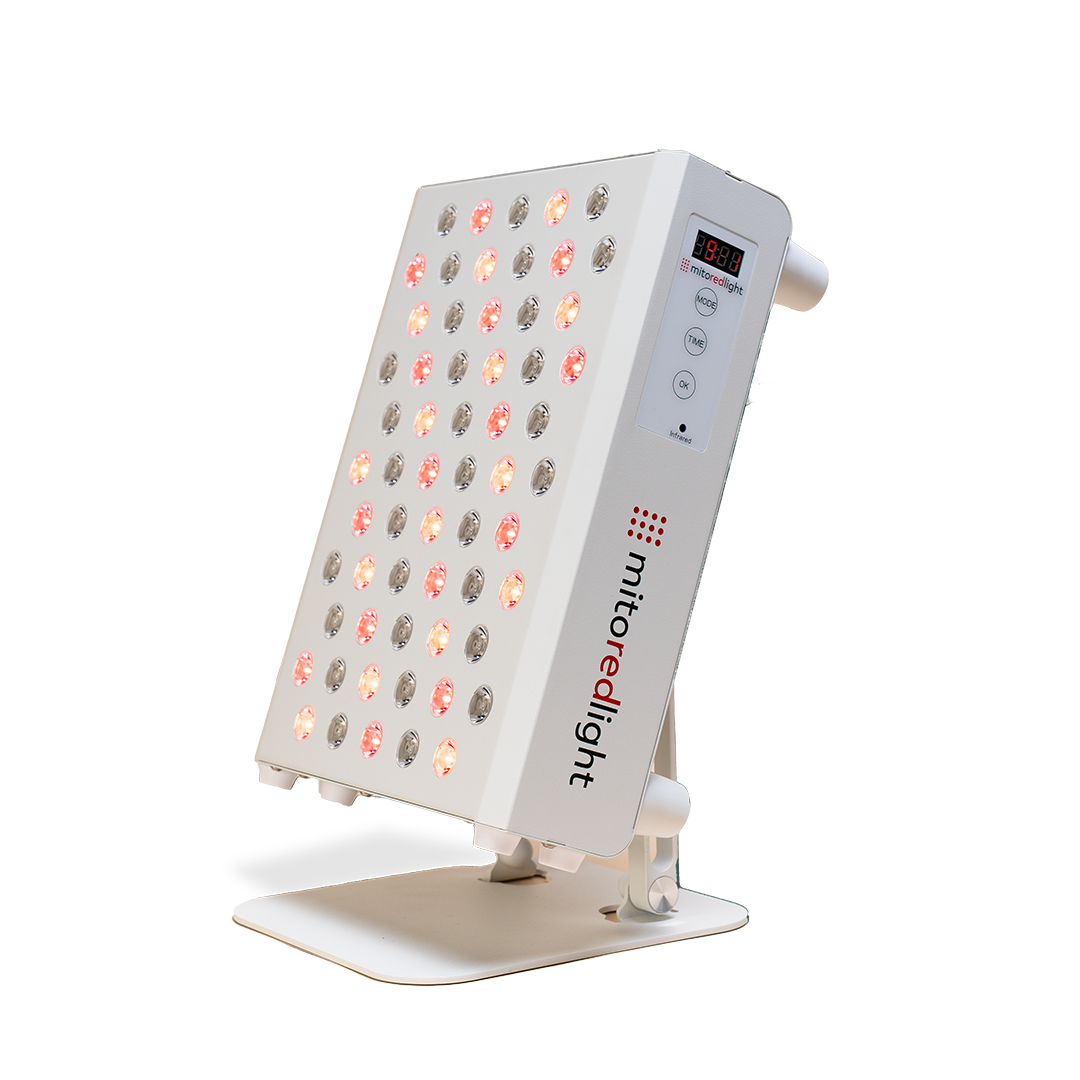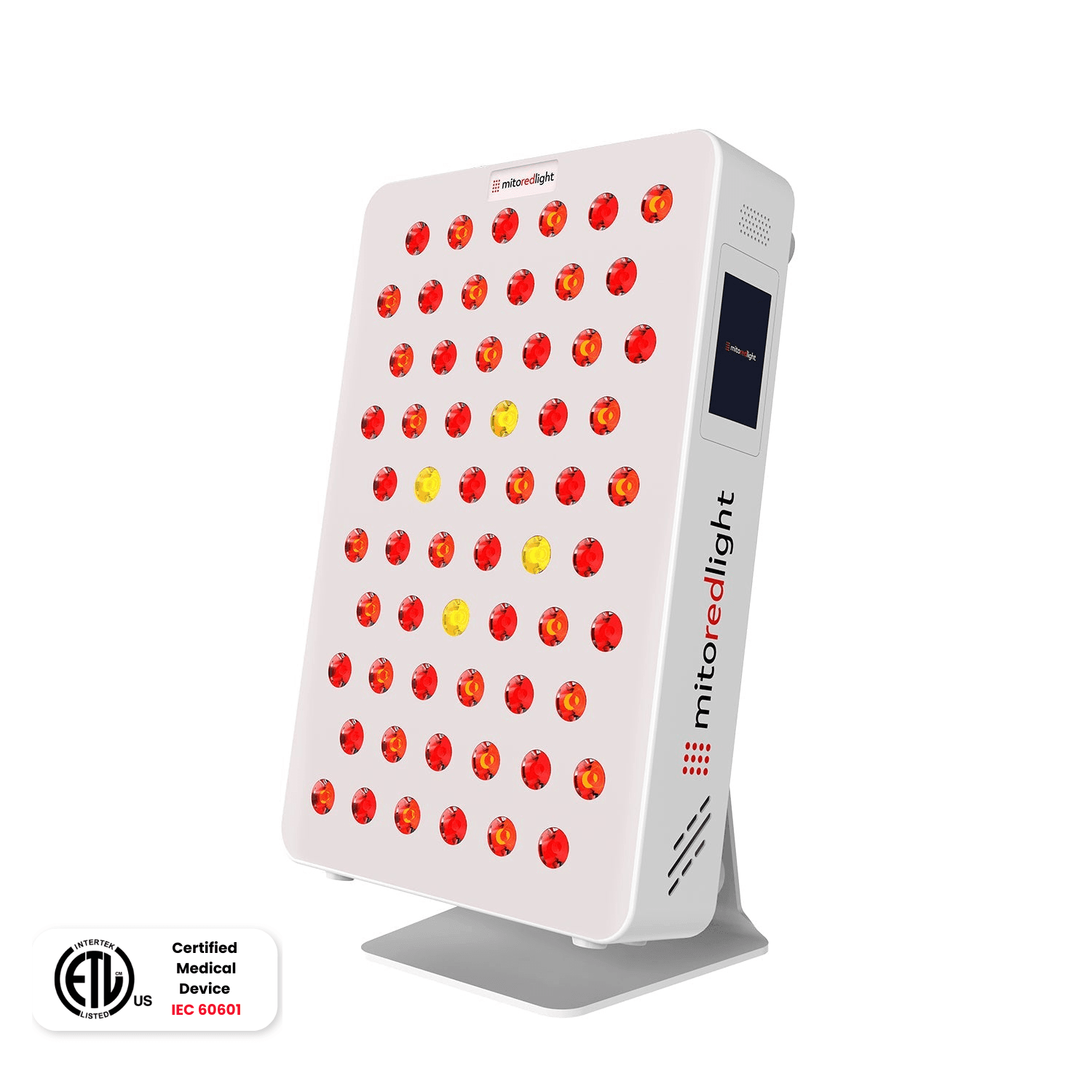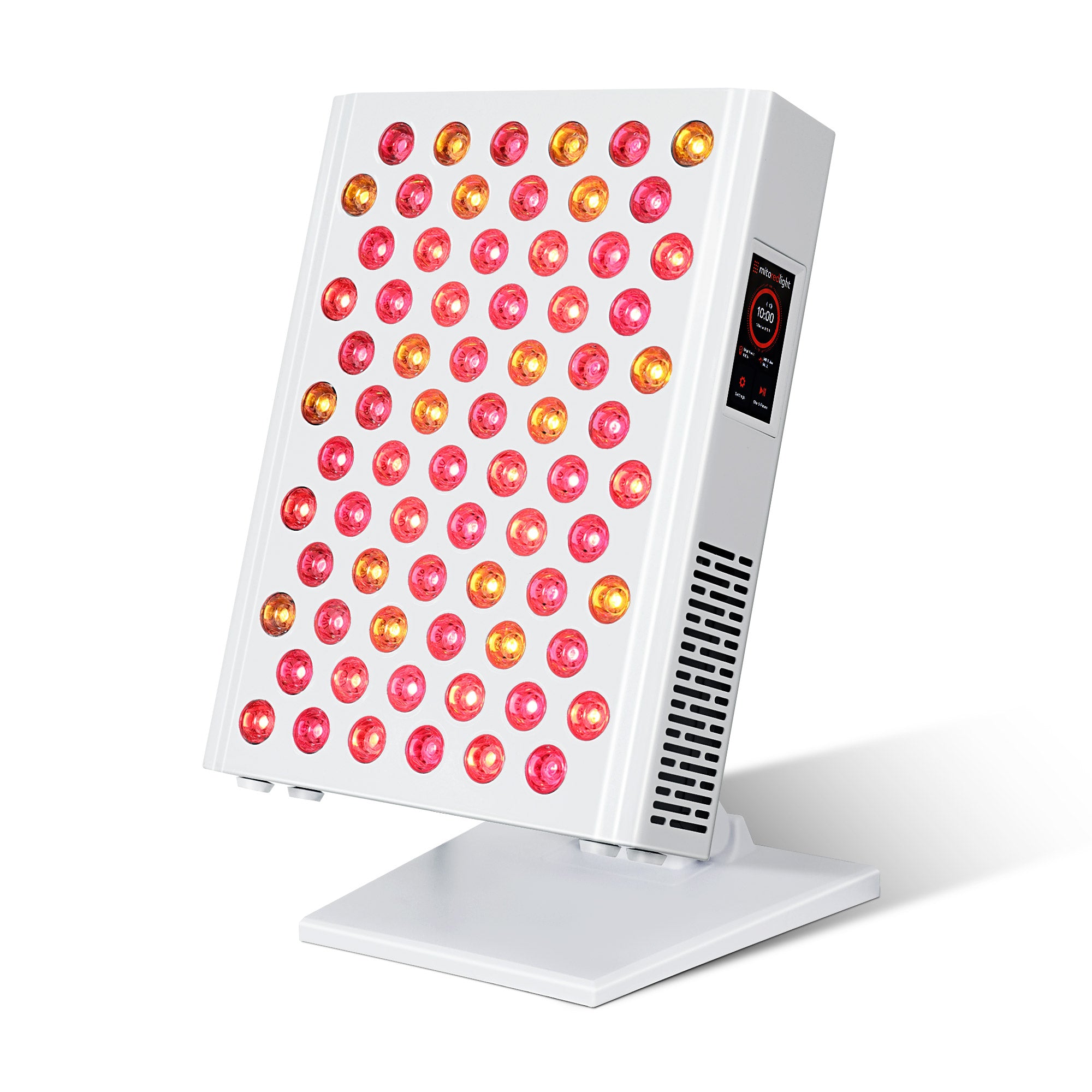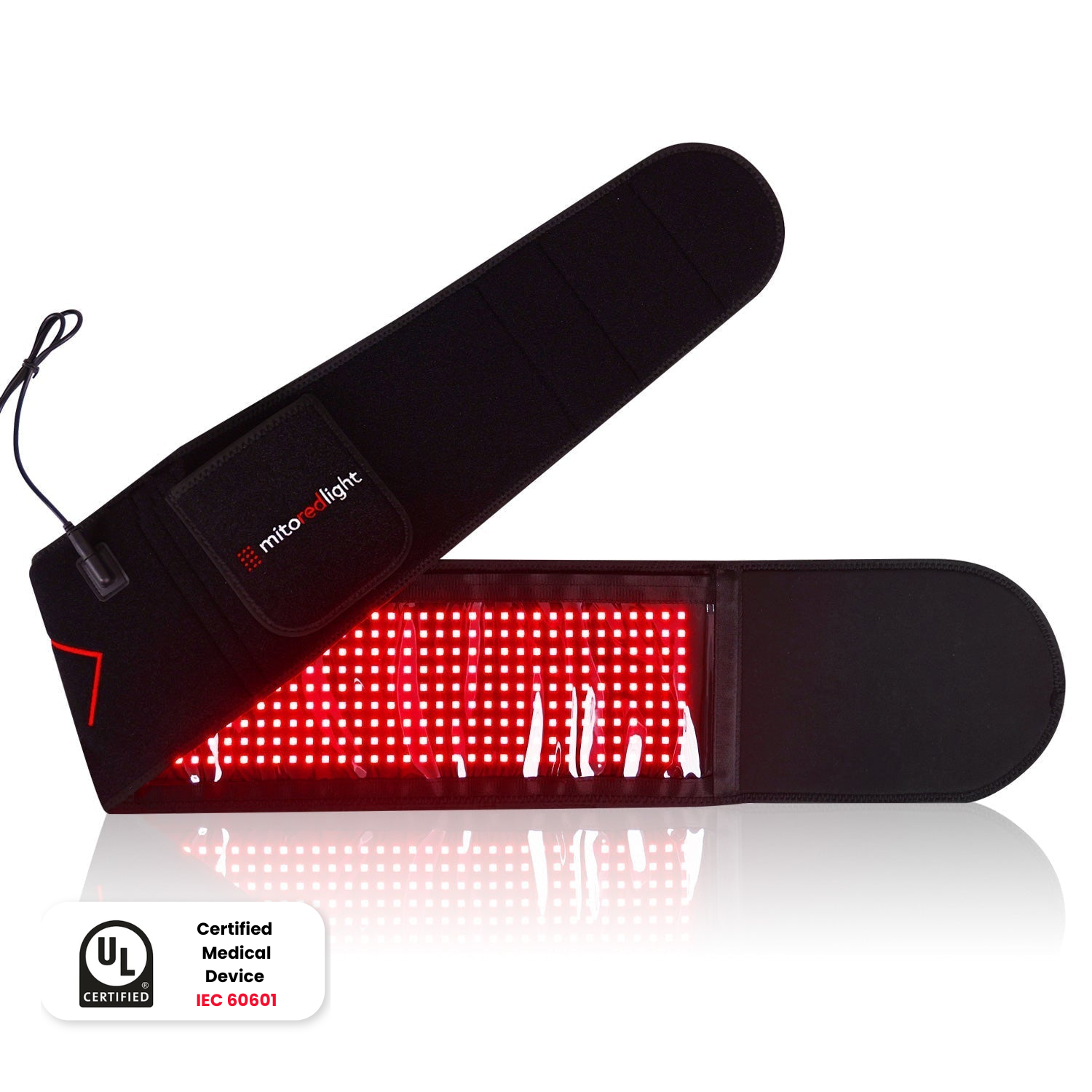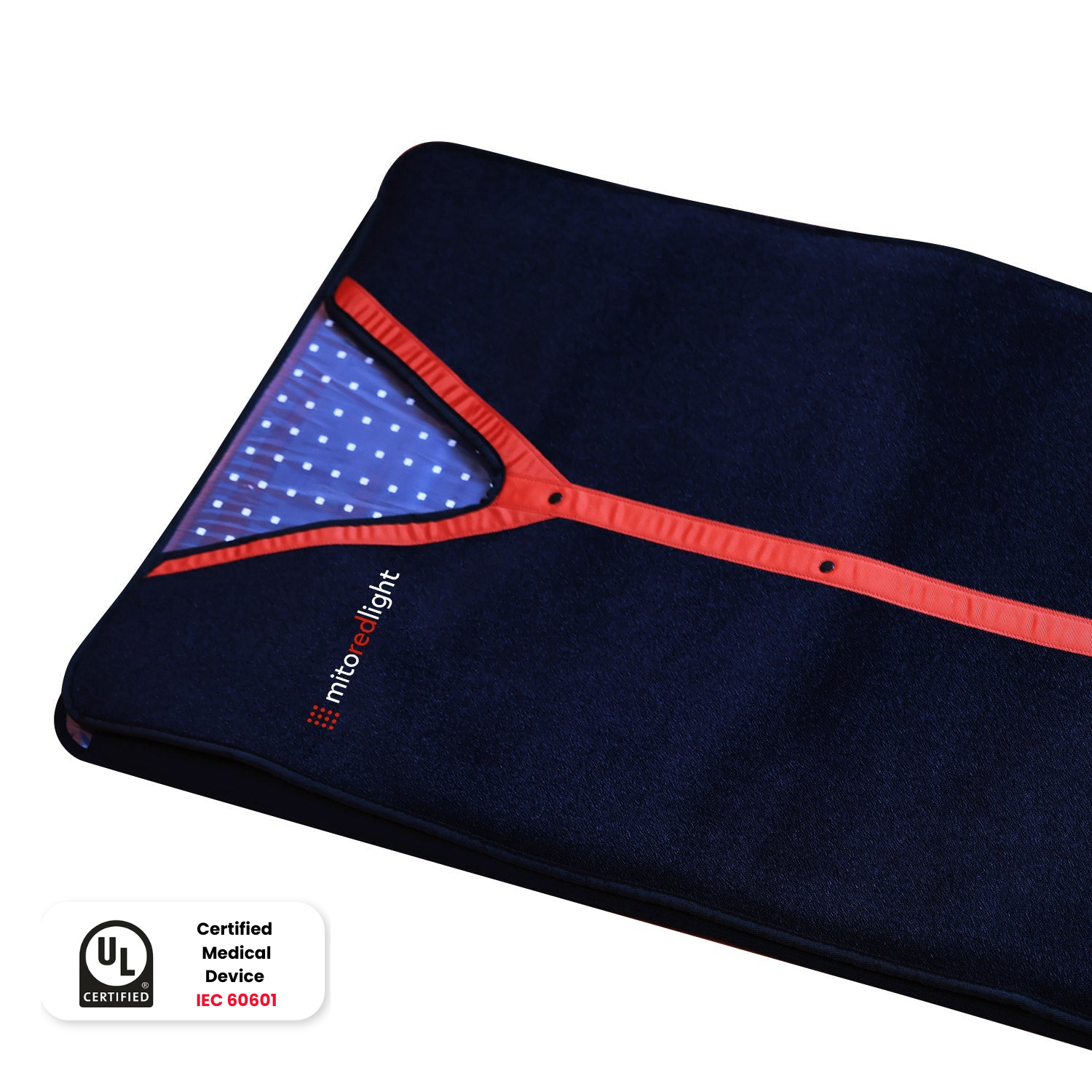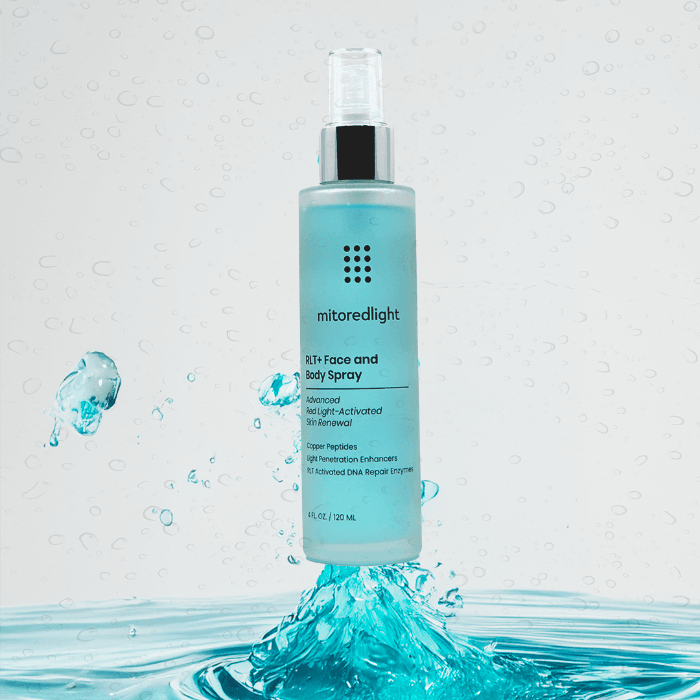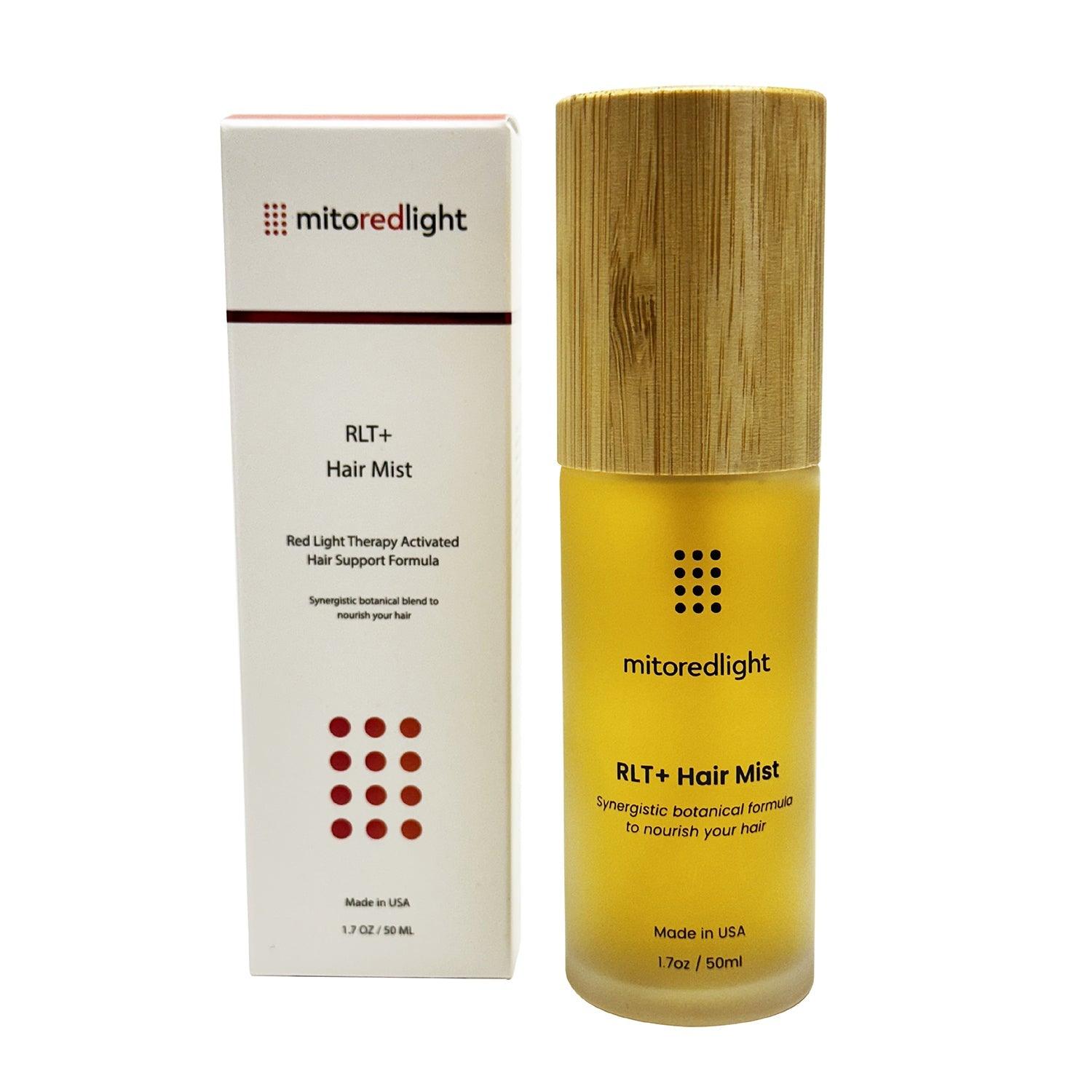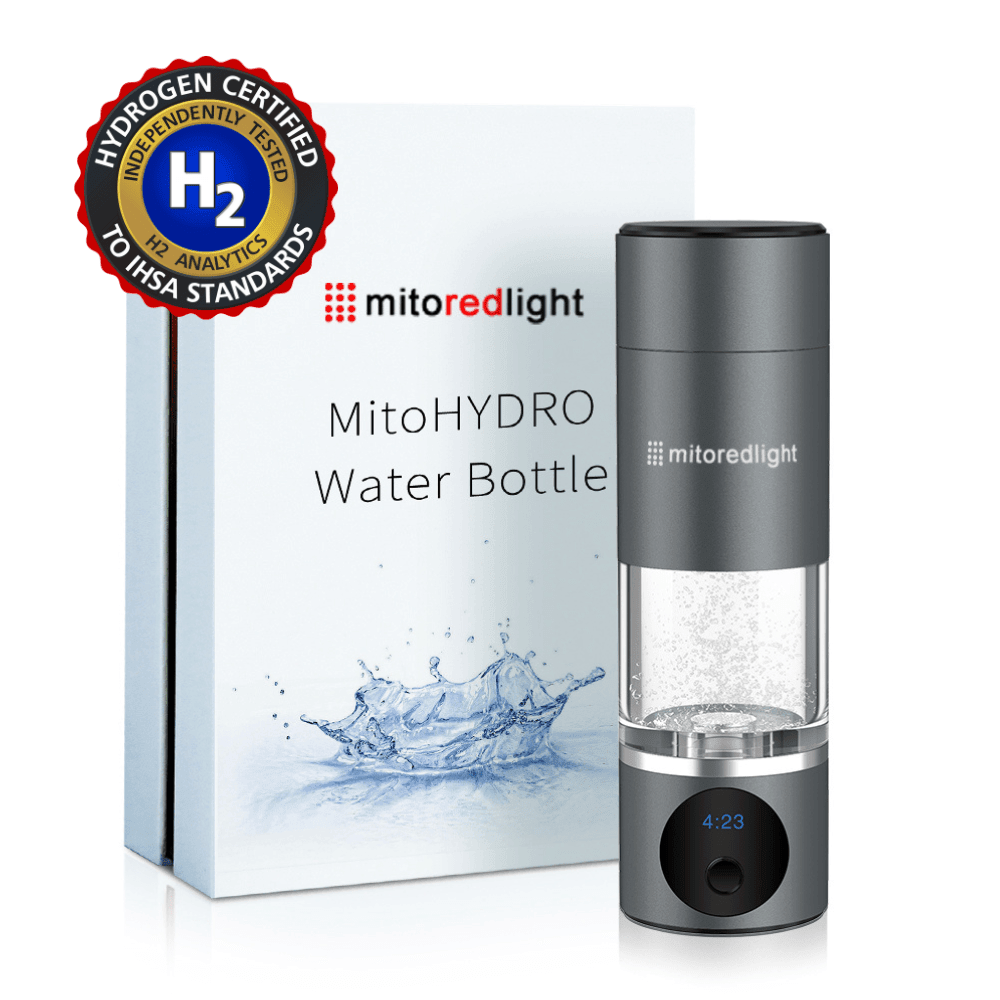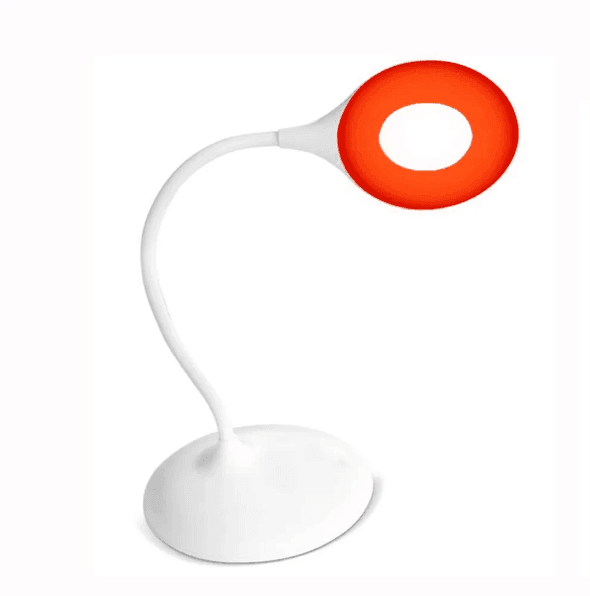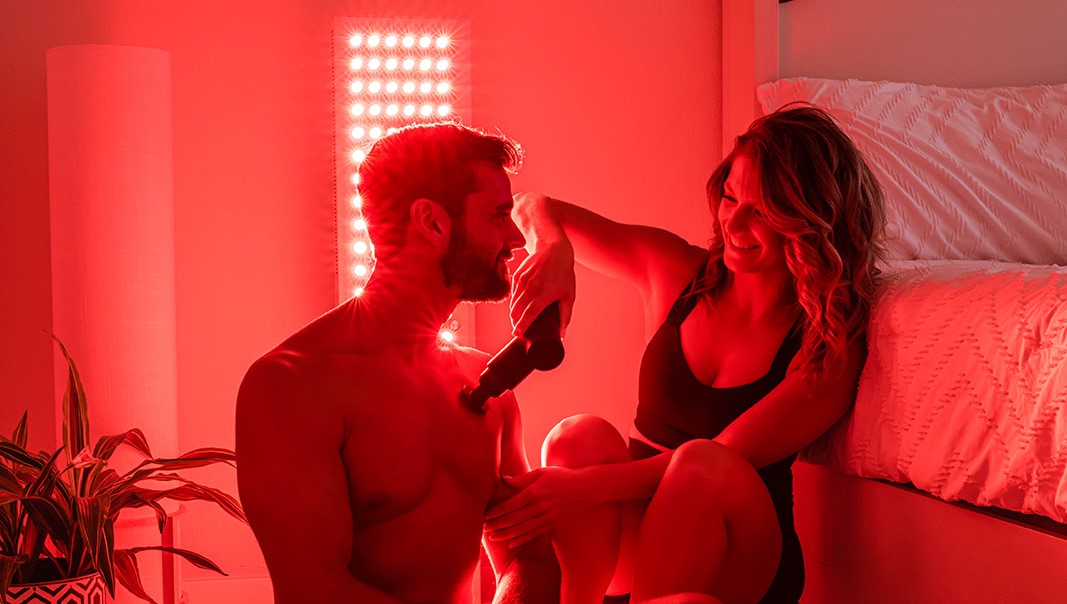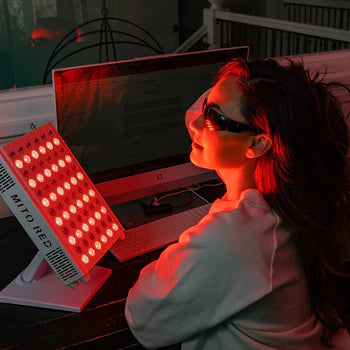DISCLAIMER: Mito Red Light devices are Class II wellness devices aimed at affecting the body through topical heating and supporting cellular function. The information provided in this article and on this site is for educational purposes only and is not intended to imply effectiveness of Mito Red Light devices for any specific application. The information provided in this article and on this site is not intended to diagnose, treat, cure, or prevent any disease, is not a substitute for consultation with a licensed medical provider and should not be construed as medical advice. Click here to read our article on potential contraindications of red light therapy..
Medically Reviewed by | Heidi Wright, BSN, RN, PCCN
We all know that certain amounts of body fat are necessary and healthful, but most of us would probably agree that while we understand we need it, we’d prefer it did not come in the form of subcutaneous cellulite.
Although some cellulite can be made less noticeable through diet and exercise, there are some areas of the body that seem to hold onto visible cellulite more than others. Although the formation of cellulite is not necessarily preventable, body contouring and the use of certain therapies (like red light) can help reduce its appearance and make it much less prominent.
Red light therapy, a form of photobiomodulation, is at the cutting edge of wellness technology, offering those interested in enhancing holistic health and well-being a natural way to augment their wellness. One use that is gaining momentum in the wellness world is the use of red light therapy for cellulite. This non-invasive, innovative approach offers more than just a beauty trend; it supports you as you embrace a more confident and healthier self. The best part? You won’t need to see a plastic surgeon or submit yourself to the scalpel for a whole-body transformation.
Related Article: Everything You Need to Know About Red Light Therapy and WEIGHT LOSS
Cellulite, often a source of frustration, affects many, regardless of body size or lifestyle. It's a common misconception that cellulite is solely a weight-related issue, but the truth is that it's actually a skin texture concern that can affect anyone. In this blog, we'll explore how red light therapy technology is used to help reduce cellulite. We’ll also provide insights into the science behind this therapy and how you can integrate it into your daily wellness routine.
What is Cellulite?
Cellulite is a condition that results in a dimpled, uneven skin texture. It is most often seen on hips, thighs, and buttocks but can occur in other areas of the body. It goes by some unflattering nicknames, like cottage cheese or orange peel skin. It occurs when fat deposits push through the connective tissue beneath the skin, creating a lumpy appearance. Contrary to popular belief, cellulite isn't a sign of poor health or obesity; it's a cosmetic skin condition that affects nearly 90% of women and some men at some point in their lives, often affecting those who are not overweight. Even if you focus on serious fat reduction, you can still have cellulite.
The causes of cellulite are multifaceted and can be very specific to the individual. The most common factors influencing the development of cellulite include:
- Hormonal changes
- Genetics
- Diet
- Lifestyle factors
- Age
It's important to understand that cellulite is a common and natural occurrence and is generally not considered to be a medical condition that is harmful on its own. While many people get cellulite, one important consideration is that it can sometimes affect people’s self-esteem. Misconceptions about cellulite often cause people to associate it with being unhealthy and overweight. People may also think of their cellulite as being unsightly or a deviation from their preferred body appearance, lowering their opinion of their own appearance and creating insecurities about what the opinions of others will be. This is where the role of innovative treatments like red light therapy comes in, offering a non-invasive solution for those seeking to address their cellulite.
Overview of Red Light Therapy
Red light therapy is a therapeutic technique that uses red and near-infrared light(NIR) wavelengths of light to treat skin issues, such as wrinkles, scars, and persistent wounds, among other conditions. Recently, it has gained attention for its potential to reduce cellulite. Treatment is non-invasive, painless, and requires no downtime, making it an appealing option for those seeking a gentle yet effective treatment. For red light therapy sculpting, you simply need red light therapy exposure to the area of skin you’d like to treat.
Red light therapy is thought to work by stimulating a light-sensitive molecule called cytochrome C oxidase. This molecule plays a vital role in producing energy in the mitochondria, small organs within each cell that produce the energy cells need to carry out their functions. Stimulating cytochrome C oxidase using the red and infrared wavelengths it is sensitive to is believed to help augment energy production in the cell, improving cell function and providing a protective benefit to the cells by helping to reduce inflammation. By supporting the amount of ATP (energy) the cell generates, red light therapy can produce a significant increase in cell function that produces total body results.
Red light therapy works for:
- Addressing skin concerns and improving skincare
- Targeting pain in joints and muscles
- Promoting hair regrowth
- Speeding up workout recovery
- Deeping sleep
- Improving mood and cognitive function
Because red light stimulates cells, and our bodies are foundationally made of cells, there’s really no limit to the benefits of red light therapy treatments.
Red light therapy is sometimes referred to as low-level laser therapy (LLLT) or simply light therapy. The modality involves exposing the skin to a panel of red light sources that are designed to provide the specific wavelengths that are most likely to cause the desired effect. One benefit to these wavelengths of light is that they are absorbed deep into the body, affecting tissues several inches deep. A typical session lasts for about 15 to 20 minutes and can be done in a professional red light therapy setting or at home with the right equipment. The convenience and ease of use make red light therapy an attractive option for those looking to enhance their skin's appearance without undergoing more intensive or invasive procedures that carry a higher risk of complication.
The Science Behind Red Light Therapy and Cellulite Reduction
It is important to note that red light therapy is a newer technology, and research into how it creates specific effects in each area in which it is used is still ongoing. There is, however, a growing body of research that is providing increasingly granular insights into these mechanisms.
The effectiveness of red light therapy in reducing cellulite lies in its ability to penetrate deep into the skin, reaching the fat cells underneath. The current hypothesis for this mechanism is that the red light emitted during the therapy stimulates both the production of collagen and elastin production, the two key proteins responsible for skin elasticity and firmness. This process, in turn, helps in smoothing out the skin's surface, thereby reducing the appearance of cellulite.
Red light therapy also improves blood flow, which can significantly impact how the skin behaves. Improved blood circulation to the skin helps it appear fuller and more youthful, and helps ensure it is properly oxygenated.
In addition to promoting the production of collagen and elastin, red light therapy is believed to aid in fat cell metabolism, potentially leading to a decrease in the fat content underneath the skin. This effect, combined with improved skin texture and firmness, contributes to a reduction in cellulite. While more clinical studies and research is needed to fully understand the extent of red light therapy's benefits, many users report positive results, making it a promising option for cellulite treatment.
“Maintaining a healthy weight and engaging in regular exercise are important for managing cellulite. Red light therapy may be a helpful adjunct to these lifestyle changes,” notes Heidi Wright, Registered Nurse.
Benefits of Red Light Therapy Beyond Cellulite Reduction
Red light therapy offers a range of other potential benefits, making it a versatile tool in your wellness arsenal. Let’s expand on some of the potential benefits of red light therapy we previously mentioned:
- Enhanced skin health - Red light therapy helps promote collagen production, potentially improving skin elasticity and reducing signs of aging
- Inflammation - Red light therapy is often used to reduce inflammation and aid in muscle recovery, making it a valuable tool for athletes or those with discomfort.. Many people who suffer from pain find that one of the best red light therapy uses is for daily soothing effects on sore joints and muscles.
- Improved wound healing - The therapy accelerates the healing process of wounds, reducing recovery time. NASA researchers discovered that near-infrared light therapy could help speed up wound healing. This technology was then implemented by the military to help address skin wounds for soldiers in combat.
- Mental well-being - Some studies suggest that red light therapy can improve mood and reduce symptoms of depression.
- Cognitive health. Early clinical trials show that red light therapy is beneficial in supporting improved executive function and verbal memory.
Incorporating red light therapy into your routine may not only aid in cellulite reduction but also treat conditions that commonly accompany cellulite, conditions like stretch marks or skin blemishes. Red light therapy can also contribute to overall health and wellness, enhancing both physical and mental well-being.
How to Try Red Light Therapy for Cellulite
Incorporating red light therapy into your routine for cellulite reduction is straightforward and convenient. For optimal results, it's recommended to undergo red light therapy sessions regularly. Here are some tips to get started:
- Consistency is key - Regular sessions, typically 3-5 times a week, are important for those wanting to achieve noticeable results. You may want to use daily sessions to achieve results more rapidly.
- Duration matters - Each session should last between 10 and 15 minutes to ensure adequate exposure to the light sources. The exact duration you should aim for may vary based on the specific therapy panel you are using. While you cannot overuse red light, there’s no evidence that spending more than about 20 minutes in front of red light each day will give you any more benefits.
- Direct skin exposure - Ensure the red light directly reaches the areas affected by cellulite for maximum effectiveness. Remove any clothing or creams over the area you are treating prior to beginning.
Remember, while red light therapy is typically considered very safe for most people, it's always wise to consult with a healthcare professional before starting any new treatment, especially if you have underlying health conditions. There are no known major side effects of red light therapy, and all Mito Red Light devices have been FDA cleared. However, if you are sensitive to bright light or LED light, you should talk to your healthcare provider before you start a red light therapy treatment.
Cellulite is a commonly experienced condition during pregnancy. While there is no indication that red light therapy is unsafe during pregnancy, it has not been tested on pregnant individuals. If you are pregnant, it is recommended to avoid red light therapy near your developing baby due to the fact that the effects are unknown and untested.
Integrating Red Light Therapy into a Holistic Wellness Routine
Red light therapy can be a powerful addition to a holistic wellness routine but works best when used as part of a broader approach to wellness. It's not just about treating a single concern like cellulite but about enhancing your overall health and well-being. Here are some ways to integrate red light therapy effectively:
- Combine with a balanced diet - Nutrient-rich foods can complement the effects of red light therapy, supporting skin health and overall wellness.
- Incorporate physical activity - Regular exercise can augment the cellulite reduction effects of red light therapy and improve overall fitness. Red light therapy can also provide a synergistic effect, reducing muscle strain and soreness associated with exercise.
- Combine with meditation or yoga - The benefit of the time you spend doing red light therapy can be augmented if you combine it with health-promoting practices like yoga or meditation. “Both red light therapy and yoga or meditation promote relaxation and stress reduction. Red light therapy's gentle waves and improved circulation can create a sense of calm, while yoga and meditation techniques focus the mind and quiet inner chatter. Combining them creates a potent synergy, allowing you to sink deeper into a state of relaxation,” highlights Wright.
While many people see benefits from red light therapy on its own, combining it with other wellness measures can augment its effects even more. Balancing red light therapy with other aspects of a healthy lifestyle can lead to more comprehensive and lasting results.
Choosing the Right Red Light Therapy Products
Red light therapy provides the specific wavelengths thought to interact with cytochrome C oxidase. When using red light therapy, it is vital to choose professional red light panels that are designed to provide these wavelengths, as not just any form of red light will do. Selecting the right red light therapy product is crucial for achieving the desired results. When choosing a device, consider the following:
- Wavelength - Look for products that offer the specific wavelengths recommended for cellulite reduction, typically in the 600-700 nm range.
- Quality and safety - Opt for devices from reputable manufacturers that adhere to safety standards.
- Intensity - Choose a device that provides a high intensity of light. This delivers a higher dose of red and infrared light given a specific timeframe.
- Coverage area - Select a device with an appropriate coverage area to ensure that it can effectively target larger sections of the body where cellulite commonly occurs, such as thighs, buttocks, and abdomen. Some devices may be wearable, providing coverage designed to target a specific area.
Investing in a high-quality red light therapy device will help ensure you get the most out of your treatment, providing both safety and efficacy. By being selective in the panels you ultimately choose, you will be best equipped to meet your long-term goals.
You could opt to pay out of pocket (red light therapy for cellulite treatment is not generally covered by insurance) to have red light treatments at a medspa or at your gym, or you could invest in a red light panel or wearable device for home use. For home use, the choice is Mito Red Light.
Mito Red Light
Not all red light therapy panels are created equal. For red light therapy to be worth the investment, you need a high-quality, independently tested, professional red light therapy device from a reputable company. With over 5 years in business and over 65,000 ecstatic customers, Mito Red Light is a brand you can trust. Our nearly 2,000 reviews speak for themselves. You can also click to review some of our customers' red light therapy before and after examples.
Our red light devices contain more LEDs per square inch than our competitors, so you never have to worry about dead space. We also third-party test all of our panels and wearable devices to ensure they are within the therapeutic window of effectiveness, as determined by scientific research.
We are confident that our devices are the highest quality and best value at home red light therapy devices available anywhere. We welcome you to review our selection of red light therapy devices or to contact one of our representatives at 1-866-861-6486 to learn more or to help find the right solution for you.
Click to learn more about potential red light therapy benefits.
To learn more basics about red light therapy, read How Does Red Light Therapy Work?
Related Articles:
Sources:
Cellulite: a review with a focus on subcision | PMC.
Photobiomodulation—Underlying Mechanism and Clinical Applications | PMC
Physiology, Adenosine Triphosphate - StatPearls | NCBI Bookshelf
